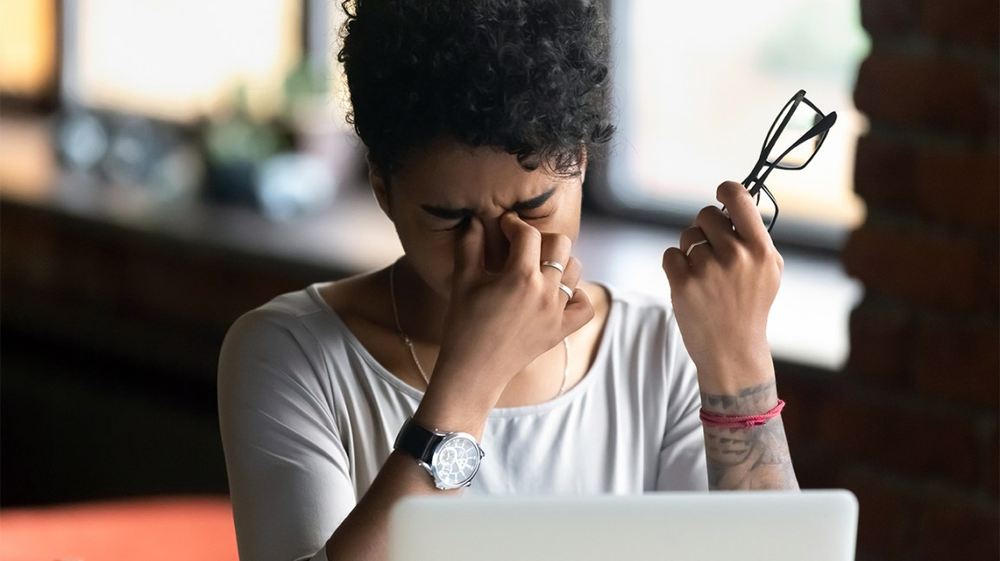
Do you have a hard time reading, using your phone or computer for extended periods of time? Do your eyes feel fatigued or do these activities make you want to fall asleep? Do you shut one eye while reading at times to decrease the strain? Have you noticed a correlation between eye strain and your headaches? There are actual neurological and physical reasons for this.
Let’s start with understanding what binocular vision is. Having good eyesight is more than just 20/20 vision. Binocular vision is the ability to use your two eyes together as a coordinated team. In 1 out of 12 people, this skill is poorly developed. That’s over 8% of the population!
When you look at objects or screens at a close range, the muscles in and around your eyes need to work harder to focus. Over time these muscles can get sore and tired, just like any other muscle in your body. Similarly, squinting for a long period of time may trigger spasms in your facial muscles and the muscles around your eyes. These spasms can lead to eye strain headaches.
Now, let’s jump to what feeds our eyes so we can understand their role. Cranial nerves (CN) emerge directly from the brain and brainstem and carry information from the brain primarily to the head and neck. Their main responsibilities are facilitating smell, vision, hearing and movement of eye and facial muscles along with sensation to the face. In relation to headache and facial pain, we will focus on cranial nerves 4 and 5, also known as the trochlear nerve and the trigeminal nerve, respectively.
The trochlear nerve (CN4) controls just one eye muscle, the superior oblique. This muscle gives us the ability to look down and in, which also is called convergence. Basically, this is how we can cross our eyes, but it is also the movement you need to coordinate while reading or focusing on something close to you. When this ability is impaired, it is called convergence insufficiency. This impairment creates an overlapping image or double vision when objects are close to you, which in turn makes reading difficult and tiring. Some people will turn or tilt their head slightly to focus with one eye and to minimize the strain. You can imagine what this potential compensation does to your neck over long periods of time.
The trigeminal nerve gives your face sensation. It has three branches, one that feeds and gives sensation to your eye area, one that feeds the upper jaw and one that feeds the lower jaw area. Hence, that pain behind your eyes or into your face, is coming from the trigeminal nerve. Check out our previous blog post on how the upper neck nerves and the trigeminal nerve are on the same pathway to the brain, therefore confusing pain signals.
If you have eye strain, fatigue, or headaches with reading or computer work, you should get evaluated by a physical therapist that specializes in headaches and migraines and they will help you decide whether you should also see an ophthalmologist that specializes in vision rehab. There are cases where the two disciplines need to work together to get the best results for headache pain. Reach out now for a free discovery visit at Novera: Headache Center – we will be happy to help you address any underlying strain and find a treatment that fits your unique situation.
P.S. – ,Check out our two-part podcast episode on eye strain @ The Headache Doctor Podcast!




